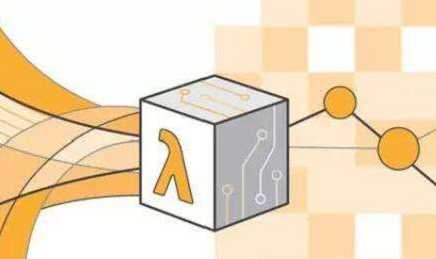标签:person ide class abs 复用 否则 == alt each
函数式接口

函数式接口在Java中是指:有且仅有一个抽象方法的接口。函数式接口,即适用于函数式编程场景的接口。而Java中的函数式编程体现就是Lambda,所以函数式接口就是可以适用于Lambda使用的接口。只有确保接口中有且仅有一个抽象方法,Java中的Lambda才能顺利地进行推导。
备注:“语法糖”是指使用更加方便,但是原理不变的代码语法。例如在遍历集合时使用的for-each语法,其实底层的实现原理仍然是迭代器,这便是“语法糖”。从应用层面来讲,Java中的Lambda可以被当做是匿名内部类的“语法糖”,但是二者在原理上是不同的。
1.2 格式
只要确保接口中有且仅有一个抽象方法即可:
修饰符 interface 接口名称 {
public abstract 返回值类型 方法名称(可选参数信息);
// 其他非抽象方法内容
}
由于接口当中抽象方法的 public abstract 是可以省略的,所以定义一个函数式接口很简单:
public interface MyFunctionalInterface {
void myMethod();
}
1.3 @FunctionalInterface注解

与 @Override 注解的作用类似,Java 8中专门为函数式接口引入了一个新的注解: @FunctionalInterface 。该注解可用于一个接口的定义上:
@FunctionalInterface
public interface MyFunctionalInterface {
void myMethod();
}
一旦使用该注解来定义接口,编译器将会强制检查该接口是否确实有且仅有一个抽象方法,否则将会报错。需要注意的是,即使不使用该注解,只要满足函数式接口的定义,这仍然是一个函数式接口,使用起来都一样。
对于刚刚定义好的 MyFunctionalInterface 函数式接口,典型使用场景就是作为方法的参数:
public class DemoFunctionalInterface {
// 使用自定义的函数式接口作为方法参数
private static void doSomething(MyFunctionalInterface inter) {
inter.myMethod(); // 调用自定义的函数式接口方法
}
public static void main(String[] args) {
// 调用使用函数式接口的方法
doSomething(() ‐> System.out.println("Lambda执行啦!"));
}
}
自定义函数式接口(无参无返回)
定义一个函数式接口 Eatable ,内含抽象 eat 方法,没有参数或返回值。使用该接口作为方法的参数,并进而通过Lambda来使用它。
@FunctionalInterface
public interface Eatable{
void eat();
}
应用场景代码:
public class DemoLambdaEatable {
private static void keepAlive(Eatable human) {
human.eat();
}
public static void main(String[] args) {
keepAlive(() ‐> System.out.println("吃饭饭!"));
}
}
请定义一个函数式接口 Sumable ,内含抽象 sum 方法,可以将两个int数字相加返回int结果。使用该接口作为方法的参数,并进而通过Lambda来使用它。
函数式接口的定义:
@FuntionalInterface public interface Sumable{ int sum (int a,int b); } public class DemoLambdaSumable { private static void showSum(int x, int y, Sumable sumCalculator) { System.out.println(sumCalculator.sum(x, y)); } public static void main(String[] args) { showSum(10, 20, (m, n) ‐> m + n); } }方法引用
在使用Lambda表达式的时候,我们实际上传递进去的代码就是一种解决方案:拿什么参数做什么操作。那么考虑一种情况:如果我们在Lambda中所指定的操作方案,已经有地方存在相同方案,那是否还有必要再写重复逻辑?
冗余的Lambda场景
来看一个简单的函数式接口以应用Lambda表达式:@FunctionalInterface public interface Printable { void print(String str); }在 Printable 接口当中唯一的抽象方法 print 接收一个字符串参数,目的就是为了打印显示它。那么通过Lambda来使用它的代码很简单:
public class Demo01PrintSimple { private static void printString(Printable data) { data.print("Hello, World!"); } public static void main(String[] args) { printString(s ‐> System.out.println(s)); } }
其中 printString 方法只管调用 Printable 接口的 print 方法,而并不管 print 方法的具体实现逻辑会将字符串打印到什么地方去。而 main 方法通过Lambda表达式指定了函数式接口 Printable 的具体操作方案为:拿到String(类型可推导,所以可省略)数据后,在控制台中输出它。这段代码的问题在于,对字符串进行控制台打印输出的操作方案,明明已经有了现成的实现,那就是 System.out对象中的 println(String) 方法。既然Lambda希望做的事情就是调用 println(String) 方法,那何必自己手动调用呢?
2.3 用方法引用改进代码能否省去lambda 的语法格式 (尽管它已经相当简洁)呢?只要“引用”过去就好了:
public class DemoPrintRef{ private static void printString(Printable data){ data.print("Holle,World"); } } public static void main(String[] args) { printString(System.out::println); } }请注意其中的双冒号 :: 写法,这被称为“方法引用”,而双冒号是一种新的语法。
2.4 方法引用符
双冒号 :: 为引用运算符,而它所在的表达式被称为方法引用。如果Lambda要表达的函数方案已经存在于某个方法的实现中,那么则可以通过双冒号来引用该方法作为Lambda的替代者。
语义分析
例如上例中, System.out 对象中有一个重载的 println(String) 方法恰好就是我们所需要的。那么对于
printString 方法的函数式接口参数,对比下面两种写法,完全等效:
Lambda表达式写法: s -> System.out.println(s);
方法引用写法: System.out::println
第一种语义是指:拿到参数之后经Lambda之手,继而传递给 System.out.println 方法去处理。
第二种等效写法的语义是指:直接让 System.out 中的 println 方法来取代Lambda。两种写法的执行效果完全一样,而第二种方法引用的写法复用了已有方案,更加简洁。
推导与省略
如果使用Lambda,那么根据“可推导就是可省略”的原则,无需指定参数类型,也无需指定的重载形式——它们都将被自动推导。而如果使用方法引用,也是同样可以根据上下文进行推导。
函数式接口是Lambda的基础,而方法引用是Lambda的孪生兄弟。下面这段代码将会调用 println 方法的不同重载形式,将函数式接口改为int类型的参数:
public interface PrintableInteger { void print(int str); }由于上下文变了之后可以自动推导出唯一对应的匹配重载,所以方法引用没有任何变化:
public class DemoPrintOverload { private static void printInteger(PrintableInteger data) { data.print(1024); } public static void main(String[] args) { printInteger(System.out::println); } }这次方法引用将会自动匹配到 println(int) 的重载形式。
对象名引用成员方法
假设有一个助理类 Assistant ,其中含有成员方法 dealFile 如下:
public class Assistant { public void dealFile(String file) { System.out.println("帮忙处理文件:" + file); } }自定义一个函数式接口 WorkHelper ,其中的抽象方法 help 的预期行为与 dealFile 方法一致,并定义一个方法使用该函数式接口作为参数。通过方法引用的形式,将助理对象中的 help 方法作为Lambda的实现。
函数式接口可以定义为:@FunctionalInterface public interface WorkHelper { void help(String file); } 通过对象名引用成员方法的使用场景代码为: public class DemoAssistant { private static void work(WorkHelper helper) { helper.help("文件"); } public static void main(String[] args) { Assistant assistant = new Assistant(); work(assistant::dealFile); } }2.7 通过类名称引用静态方法
由于在 java.lang.Math 类中已经存在了静态方法 abs ,所以当我们需要通过Lambda来调用该方法时,有两种写法。首先是函数式接口:@FunctionalInterface public interface Calcable { int calc(int num); } 第一种写法是使用Lambda表达式: public class DemoLambda { private static void method(int num, Calcable lambda) { System.out.println(lambda.calc(num)); } public static void main(String[] args) { method(‐10, n ‐> Math.abs(n)); } }但是使用方法引用的更好写法是:
public class DemoMethodRef { private static void method(int num, Calcable lambda) { System.out.println(lambda.calc(num)); } public static void main(String[] args) { method(‐10, Math::abs); } }在这个例子中,下面两种写法是等效的:
Lambda表达式: n -> Math.abs(n)
方法引用: Math::abs
类名称引用静态方法
假设有一个 StringUtils 字符串工具类,其中含有静态方法 isBlank 如下:public final class StringUtils { public static boolean isBlank(String str) { return str == null || "".equals(str.trim()); } }自定义一个函数式接口 StringChecker ,其中的抽象方法 checkBlank 的预期行为与 isBlank 一致,并定义一个方法使用该函数式接口作为参数。通过方法引用的形式,将 StringUtils 工具类中的 isBlank 方法作为Lambda的实现。
函数式接口的定义可以为:@FunctionalInterface public interface StringChecker { boolean checkString(String str); } 应用场景代码为: public class DemoStringChecker { private static void methodCheck(StringChecker checker) { System.out.println(checker.checkString(" ")); } public static void main(String[] args) { methodCheck(StringUtils::isBlank); } }通过super引用成员方法
如果存在继承关系,当Lambda中需要出现super调用时,也可以使用方法引用进行替代。首先是函数式接口:@FunctionalInterface public interface Greetable { void greet(); } 然后是父类 Human 的内容: public class Human { public void sayHello() { System.out.println("Hello!"); } }最后是子类 Man 的内容,其中使用了Lambda的写法:
public class Man extends Human { @Override public void sayHello() { method(() ‐> super.sayHello()); } private void method(Greetable lambda) { lambda.greet(); System.out.println("I‘m a man!"); } }但是如果使用方法引用来调用父类中的 sayHello 方法会更好,例如另一个子类 Woman :
@Override public void sayHello() { method(super::sayHello); } private void method(Greetable lambda) { lambda.greet(); System.out.println("I‘m a woman!"); } }在这个例子中,下面两种写法是等效的:
Lambda表达式: () -> super.sayHello()
方法引用: super::sayHello
通过this引用成员方法this代表当前对象,如果需要引用的方法就是当前类中的成员方法,那么可以使用“this::成员方法”的格式来使用方法引用。首先是简单的函数式接口:
@FunctionalInterface public interface Richable { void buy(); } 下面是一个丈夫 Husband 类: public class Husband { private void marry(Richable lambda) { lambda.buy(); } public void beHappy() { marry(() ‐> System.out.println("买套房子")); } }开心方法 beHappy 调用了结婚方法 marry ,后者的参数为函数式接口 Richable ,所以需要一个Lambda表达式。
但是如果这个Lambda表达式的内容已经在本类当中存在了,则可以对 Husband 丈夫类进行修改:@FunctionalInterface public interface Richable { void buy(); } 下面是一个丈夫 Husband 类: public class Husband { private void marry(Richable lambda) { lambda.buy(); } public void beHappy() { marry(() ‐> System.out.println("买套房子")); } }如果希望取消掉Lambda表达式,用方法引用进行替换,则更好的写法为:
public class Husband { private void buyHouse() { System.out.println("买套房子"); } private void marry(Richable lambda) { lambda.buy(); } public void beHappy() { marry(this::buyHouse); } }下面两种写法是等效的:
Lambda表达式: () -> this.buyHouse()
方法引用: this::buyHouse
2.11 类的构造器引用
由于构造器的名称与类名完全一样,并不固定。所以构造器引用使用 类名称::new 的格式表示。首先是一个简单的 Person 类:private String name; public Person(String name) { this.name = name; } public String getName() { return name; } } 然后是用来创建 Person 对象的函数式接口: public interface PersonBuilder { Person buildPerson(String name); }要使用这个函数式接口,可以通过Lambda表达式:
public class Demo09Lambda { public static void printName(String name, PersonBuilder builder) { System.out.println(builder.buildPerson(name).getName()); } public static void main(String[] args) { printName("河正宇", name ‐> new Person(name)); } } 但是通过构造器引用,有更好的写法: public class Demo10ConstructorRef { public static void printName(String name, PersonBuilder builder) { System.out.println(builder.buildPerson(name).getName()); } public static void main(String[] args) { printName("河正宇", Person::new); } }下面两种写法是等效的:
Lambda表达式: name -> new Person(name)
方法引用: Person::new
2.12 数组的构造器引用
数组也是 Object 的子类对象,所以同样具有构造器,只是语法稍有不同。如果对应到Lambda的使用场景中时,需要一个函数式接口:@FunctionalInterface public interface ArrayBuilder { int[] buildArray(int length); }
在应用该接口的时候,可以通过Lambda表达式:
public class Demo11ArrayInitRef { private static int[] initArray(int length, ArrayBuilder builder) { return builder.buildArray(length); } public static void main(String[] args) { int[] array = initArray(10, length ‐> new int[length]); } } 但是更好的写法是使用数组的构造器引用: public class Demo12ArrayInitRef { private static int[] initArray(int length, ArrayBuilder builder) { return builder.buildArray(length); }
public static void main(String[] args) {
int[] array = initArray(10, int[]::new);
}
}
下面两种写法是等效的:
Lambda表达式: length -> new int[length]
方法引用: int[]::new
数组的构造器引用,可以和Java 8的Stream API结合,在一定程度上“解决”集合中 toArray 方法的泛型擦除问题。
标签:person ide class abs 复用 否则 == alt each
原文地址:https://www.cnblogs.com/mtime2004/p/9704065.html